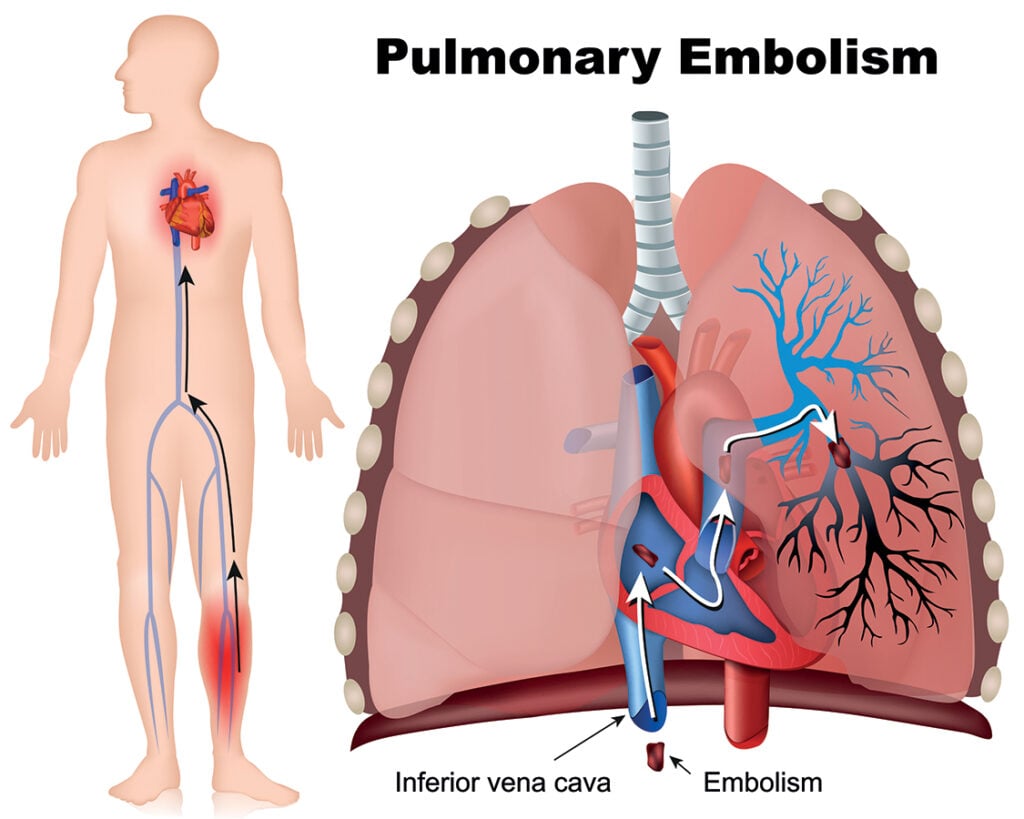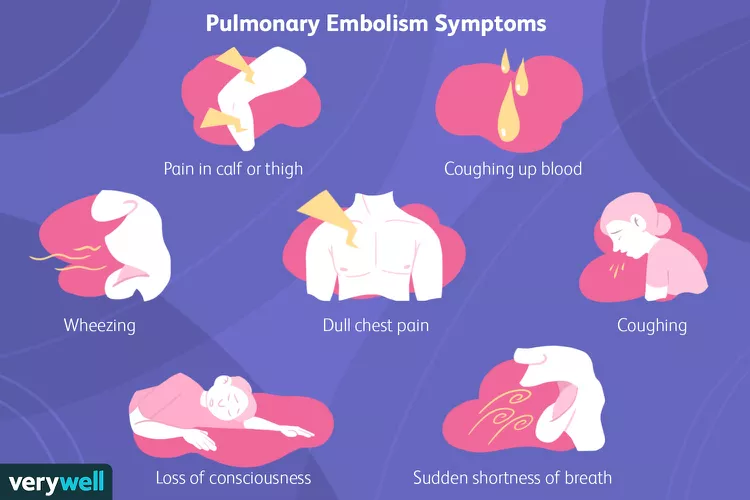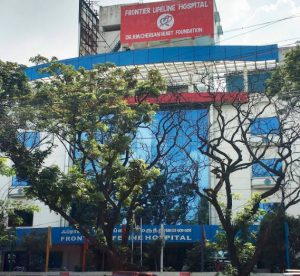Pulmonary Embolism (PE)
What is a Pulmonary Embolism? Pulmonary embolism (PE) is a blockage in one of the pulmonary arteries in the lungs. In most cases, the cause of pulmonary embolism is blood clots that travel to the lungs from the deep veins in the legs or rarely from other parts of the body. Pulmonary embolism, if left […] Read More
Top Doctors For Pulmonary Embolism (PE) Treatments
Top Hospitals For Pulmonary Embolism (PE) Treatments
Pulmonary Embolism (PE)
What is a Pulmonary Embolism?
Pulmonary embolism (PE) is a blockage in one of the pulmonary arteries in the lungs. In most cases, the cause of pulmonary embolism is blood clots that travel to the lungs from the deep veins in the legs or rarely from other parts of the body. Pulmonary embolism, if left untreated, will become a life-threatening condition [1].

How do we treat pulmonary embolism?
The treatment of PE depends on the size and location of the clot. PE treatment is a medical emergency condition that requires immediate treatment.
- The usual treatment is anti-clotting medicine (anticoagulants) — such as heparin, given in injection or tablet form. Doctors can also give medicines that dissolve clots (thrombolytics) into the bloodstream or even directly into a clot.
- Fibrinolytic therapy
- Vena cava filters
Some people need surgery to inject medicine into a clot, remove a clot or place a filter in a vein to keep clots from reaching the lungs. A few of the surgical techniques doctors might prescribe are:
1. Catheter-directed methods- This technique is for removing or breaking down clots. A thin tube called a catheter is inserted through the vein, which will suction out, break down or dissolve the clots in the pulmonary artery.
2. Open surgery- Doctors suggest this surgery only in an emergency such as
- When medications are not working
- Catheter-directed methods are not available.
- Whenever medications are contraindicated [2].
3. Pulmonary embolectomy
4. Percutaneous thrombectomy.
After the first few months of treatment for DVT or PE, whether to continue anti-clotting medicine can be complex. Venous thromboembolism experts at SCCA can provide information and advice to help the patient decide about ongoing treatment.
Symptoms
What are the most common symptoms of pulmonary embolism?

The most common symptoms of pulmonary embolism are listed below:
- Shortness of breath which can be gradual or sudden
- Fast heart rate or breathing
- Chest pain, which is made worse by taking a deep breath or coughing
- Anxiety
- Feeling lightheaded or fainting
- Bluish discoloration of the skin
- Spitting up blood
- Palpitations
- Low blood pressure
- Wheezing
Causes
What are the most common causes of pulmonary embolism?
PE can occur for several reasons, including damage to a vein, such as from a fracture or surgery, or slow blood flow, such as from lying in bed or sitting for long periods like a long flight. Other risk factors include:
- Being pregnant
- The use of birth control pills
- Hormone replacement for menopause
- Being overweight
- Having cancer
- Having an inherited condition that increases the tendency to form clots or decreases the ability to dissolve them
- Medical conditions such as – cardiovascular diseases (congestive heart failure, heart attack, atrial fibrillation) or stroke.
- Elevation of clotting factors in the blood.
FAQ
- What are the risk factors associated with pulmonary embolism?
The risk factors associated with pulmonary embolism are:
- Genetic conditions that can increase the risk of blood clot formation.
- Family history of blood clot diseases
- Patients who underwent surgery or any major injury.
- Age-related disorder
- Previous history of clots.
- Patients who underwent cancer therapy
- Enlarged veins (varicose veins)
- History of smoking
- Obesity.
- How is pulmonary embolism diagnosed?
Diagnosis of PE is often difficult since most of the symptoms of PE resemble other diseases. A few of the diagnostic tests are listed below:
- Chest X-ray- used to assess the lungs and heart.
- Ventilation/ Perfusion (V/Q) scan- It is used to evaluate ventilation or movement of air in and out of the bronchi and bronchioles. A perfusion scan measures blood flow to the lungs.
- Pulmonary angiogram- It is used to evaluate various conditions such as an aneurysm (bulging of blood vessels), stenosis (narrowing of blood vessels), or blockages.
- CT and MRI scan
- Duplex ultrasound (US)- It is done to assess the blood flow and structure of blood vessels in the legs.
- Blood tests
- EKG (Electrocardiogram)- Used to evaluate the heart [3].
- What are the complications associated with pulmonary embolism?
Major complications associated with PE are listed below:
- Recurrent pulmonary embolism
- Pulmonary infarction
- Pulmonary hypertension
- Death
- How do we prevent pulmonary embolism?
Here are a few steps a patient can follow to prevent PE.
- Patients at high risk of forming blood clots should take blood-thinning medications such as heparin, warfarin, or warfarin alternative before and after the surgery. These medications will prevent the formation of blood clots in high-risk patients.
- Quit smoking
- Obese patients should reduce their weight by maintaining a healthy lifestyle, exercising regularly, and following a strict healthy diet.
- Usage of compression stockings for the legs
- Pneumatic compression.
- How long will the patient require to recover from PE?
The duration of recovery from PE depends upon various factors such as type of PE, location, and severity. On average, the patient might require about a few weeks to months to recover from PE.
- What is the prognosis of patients diagnosed with PE?
The prognosis of patients with PE depends on the underlying disease state and appropriate diagnosis and treatment. Approximately 10% of the patients die within the first one hour, and 30% die subsequently from recurrent embolism [5].
References
- https://www.mayoclinic.org/diseases-conditions/pulmonary-embolism/symptoms-causes/syc20354647#:~:text=Pulmonary%20embolism%20(PE)%20occurs%20when,This%20is%20called%20DVT%20.
- https://www.healthline.com/health/pulmonary-embolus#treatment
- https://www.hopkinsmedicine.org/health/conditions-and-diseases/pulmonary-embolism
- https://www.verywellhealth.com/symptoms-of-pulmonary-embolus-4163779
- https://emedicine.medscape.com/article/300901-overview#a7










































